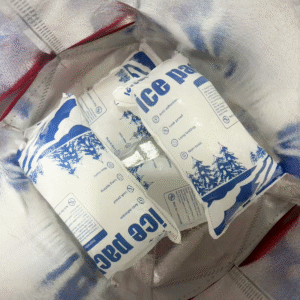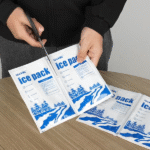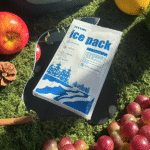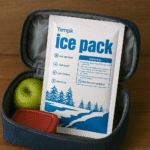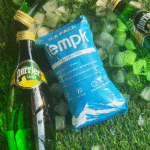Das Verpacken von Muttermilch mit Trockeneis sorgt für einen sicheren Ferntransport, während die Milch gefroren bleibt. Egal, ob Sie reisende Eltern sind oder Muttermilch versenden, Die Verwendung von Trockeneis bietet eine wirksame Lösung, um Frische zu erhalten. In diesem Leitfaden, Wir werden alles, was Sie über das Verpacken von Muttermilch mit Trockeneis wissen müssen, sicher und effizient aufschlüsseln.
-
Warum Trockeneis für den Transport von Muttermilch verwenden??
-
Wie man Muttermilch mit Trockeneis Schritt für Schritt einpackt?
-
Sicherheitsvorkehrungen für den Umgang mit Trockeneis
-
2025 trends in cold chain packaging for breast milk
Why Use Dry Ice for Breast Milk Transportation?
Trockeneis ist die bevorzugte Option für den Versand von Muttermilch über lange Strecken aufgrund seiner extrem niedrigen Temperatur, Dadurch wird die Milch länger gefroren als normale Eis- oder Gelpackungen. Im Gegensatz zu traditionellem Eis, das schmilzt und erzeugt Wasser, Trockeneis untermauert von fest zu Gas, keine Rückstände hinterlassen. Diese Eigenschaft hilft, zu verhindern, dass Milch aufgetaut oder nass wird, Aufrechterhaltung seiner Nährstoffe während des Transits.
Expert Tip: Dry ice is most suitable for trips lasting over 12 Std., ensuring the milk remains frozen without the need for refills.
Trockeneis vs. Gelpackungen: Which Is Better?
| Kühlmethode | Ca. Dauer | Vorsichtsmaßnahmen zur Handhabung | What It Means for You |
|---|---|---|---|
| Trockeneis | 24-48 Std. | Verwenden Sie isolierte Handschuhe, store in ventilated containers | Best for long travels |
| Gel -Eisbeutel | Bis zu 24 Std. | Sicher zu handhaben, easy to replenish | Suitable for short trips |
| Normales Eis | 12-24 Std. | Can cause melting and mess | Inconsistent for shipping |
Zusammenfassung: Dry ice is essential for long-distance travel or shipping, while gel packs suffice for short trips.
Step-by-Step Guide to Packing Breast Milk with Dry Ice
1. Freeze the Milk Properly
Ensure that the milk is fully frozen before packing. Use durable breast milk storage bags or bottles, leaving space at the top for expansion as the milk freezes.
2. Wählen Sie den richtigen Kühler
An insulated cooler, preferably made of Styrofoam or vacuum-insulated material, will help maintain the desired temperature. Avoid using regular picnic coolers as they may not provide adequate insulation.
3. Layer the Milk and Dry Ice
Place a layer of dry ice at the bottom of the cooler. Dann, place the frozen milk containers on top of the dry ice, ensuring there is a barrier (like newspaper) between the dry ice and the milk to prevent direct contact. Repeat the process, alternating layers of milk and dry ice.
4. Seal and Ventilate the Cooler
Close the cooler tightly but leave a small gap or use a vented cooler to allow the carbon dioxide gas to escape as the dry ice sublimates.
Tipp: Always label the cooler with “Dry Ice UN 1845” and include the net weight of the dry ice, as required by airline and shipping regulations.
5. Select Shipping Method
For the safest transportation, use expedited services like overnight or 2-day shipping. Avoid shipping over the weekend to prevent extended transit times.
How Long Will Dry Ice Keep Breast Milk Frozen?
The duration that dry ice will keep breast milk frozen depends on the amount of dry ice used and the external temperature. Hier sind einige allgemeine Richtlinien:
-
5-10 Pfund Trockeneis will keep milk frozen for 24-36 Std..
-
10-20 Pfund Trockeneis can keep the milk frozen for 48 Stunden oder mehr.
Expert Tip: Estimate your travel time and adjust the amount of dry ice accordingly. More dry ice may be needed for longer trips or warmer climates.
Common Mistakes to Avoid When Packing Breast Milk with Dry Ice
-
Not Ventilating the Cooler Properly
Ensure there is enough ventilation to allow the carbon dioxide gas to escape. Without ventilation, the cooler can rupture. -
Zu wenig Trockeneis verwenden
Underestimating the amount of dry ice needed could cause the milk to thaw prematurely. Always calculate the required dry ice based on travel time. -
Packing Milk in Glass Containers
Glass can crack under the extreme cold of dry ice. Stick to plastic or purpose-built storage bags.
2025 Trends in Dry Ice for Breast Milk Transport
Während die Kühlkettenbranche Fortschritte macht, new materials and technologies have emerged to improve breast milk transportation:
-
Umweltfreundliche Isolierung: Biodegradable materials are now used to improve the sustainability of dry ice transportation.
-
Smartemperaturüberwachung: Advanced temperature sensors, integrated into shipping containers, allow real-time tracking of conditions during transit, ensuring milk stays frozen.
-
Captured CO₂ Dry Ice: In 2025, dry ice made from captured carbon dioxide is becoming popular as a more eco-friendly option.
FAQ: Common Questions About Packing Breast Milk with Dry Ice
Q1: How much dry ice do I need for a 24-hour shipping time?
Verwenden Sie ungefähr 5-10 Pfund Trockeneis für 24-36 Stunden Versandzeit.
Q2: Can I use gel packs instead of dry ice?
Gel packs are useful for short trips but cannot maintain the freezing temperatures required for long-distance breast milk transport.
Q3: Wie entsuche ich das übrig gebliebene Trockeneis??
Allow dry ice to sublimate outdoors in a well-ventilated area. Never dispose of it in sinks or toilets.
Abschluss & Empfehlungen
Packing breast milk with dry ice is the safest way to ensure it stays frozen during long-distance transport. By following the steps and safety guidelines outlined in this guide, you can confidently ship your milk to its destination. Remember to estimate the amount of dry ice needed, choose the right cooler, und sorgen Sie für eine gute Belüftung.
Nächste Schritte:
-
Select the appropriate cooler and dry ice.
-
Pack the milk in leak-proof, frozen containers.
-
Use expedited shipping for faster delivery.
-
Follow safety protocols when handling dry ice.






